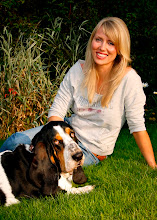Dogs not only want to explore their environment with as much freedom as possible using their incredible senses of smell, hearing and sight, but a dog that pulls on the lead is a good indicator of a dog who’s confused about its position within the hierarchy of its pack. In the wild, the alpha pair lead the hunt and the rest of the pack follow. There is no debate, the rest of the pack follow out of respect for the leaders as the decision makers. If you’ve got a dog that perceives himself to be the decision maker in your domestic pack, it makes total sense that come the times when the pack go out ‘on the hunt’, where shall leader be? In front!
A dog that’s being yanked on the lead or even shouted at receives mixed messages from us. To be the good leader for our dogs we must always ask ourselves ‘Am I happy and am I in control?’ Being a good leader stems from the three C’s: being calm, consistent and convincing. If your dog gets over excited at the mere sight of the lead or you have to struggle to even get the lead on the dog, you haven’t just got a problem walking outside, you have a problem before you even think about going for a walk! To understand dog behaviour we observe wild dogs as this is where we see true dog behaviour in their natural environment.
In the wild, dogs do not walk in unison or ‘to heel’, and they certainly have no concept of the lead – where in the wild do you ever see a dog taking another dog for a walk? In fact, wild dogs such as wolves, jackals, kayotee, dingoes, dholes, painted dogs, hyenas and foxes, never ‘go for a walk’. The closest a wild dog gets to going for a walk is with the hunt. However, they don’t go out through choice, they have to leave the den in order to find the food they need for survival. In the wild, dogs may only hunt once every three days.
So, we have to teach our dog where we want him to be – by our side, and that has to be done without shouting, violence or force. So, let’s look at the most effective way to teach your to walk to heel.
To teach your dog good manners, you must begin at home, where there are no distractions.
- With your tasty treat in your hand (sausage/cheese/meat strip), turn your back away from your dog, put your hand containing the treat to your side to show your dog where you want him to be, call his name and ask him to ‘heel’.
- If your dog appears at your side praise him and give him the food reward. If he doesn’t, leave it an hour or so then try again.
- Build this process up by walking a few steps, while treating and praising as he gets it right. Intermittently you may say ‘heel’ – but remember you’re showing your dog where you want him to be with your body and movement, this action speaks louder than words!
- Walking to heel doesn’t come naturally to the dog, so you have to build up your and your dog’s confidence and trust in you, so you must stay calm. If your stress levels rise your dog will pick up on this, so stop your heel work practice. This is like the good diet, you should practice this ‘little and often’ and only for 5 to 10 minutes, so you and your dog have fun and stay focused.
- With practice you’ll be able to move freely around your home and garden with your dog following you in all different directions – forwards, backwards, in figures of eight and so on! You should practice this off the lead first, and then once you and the dog have the hang of it, introduce the lead.
- Get the dog used to seeing the lead being moved about, this breaks any associations that the lead equals ‘going for a walk’ and helps calm the dog down. If he gets over excited once you’ve popped on the lead, take it off, go and sit down and wait until he’s settled.
- Practice moving to the door regularly, if he pulls just stop and wait for the lead to go slack, as this happens say "good dog" and take a step towards the door. You may only get one step before he pulls again, but you must be consistent and keep a steady pulse rate. If he pulls again, you can take off the lead and abandon the walk altogether or stand still until the lead goes slack once more.
- Once you’ve got out of the door you need to keep practicing with the principle of ‘slack lead’ equals ‘move forward’; ‘tight lead’ equals ‘stop’. Consistency is the key to success here. The reward is the moving forward, praise and treat, so if you keep going when the dog is pulling, you’re actually rewarding the dog for pulling!! Use treats to get the dog focused back on you. If the dog pulls you stop, wait for the dog to look up, change direction and reward the dog for being in the right position.
This exercise does take time and a lot of patience but it really works!

